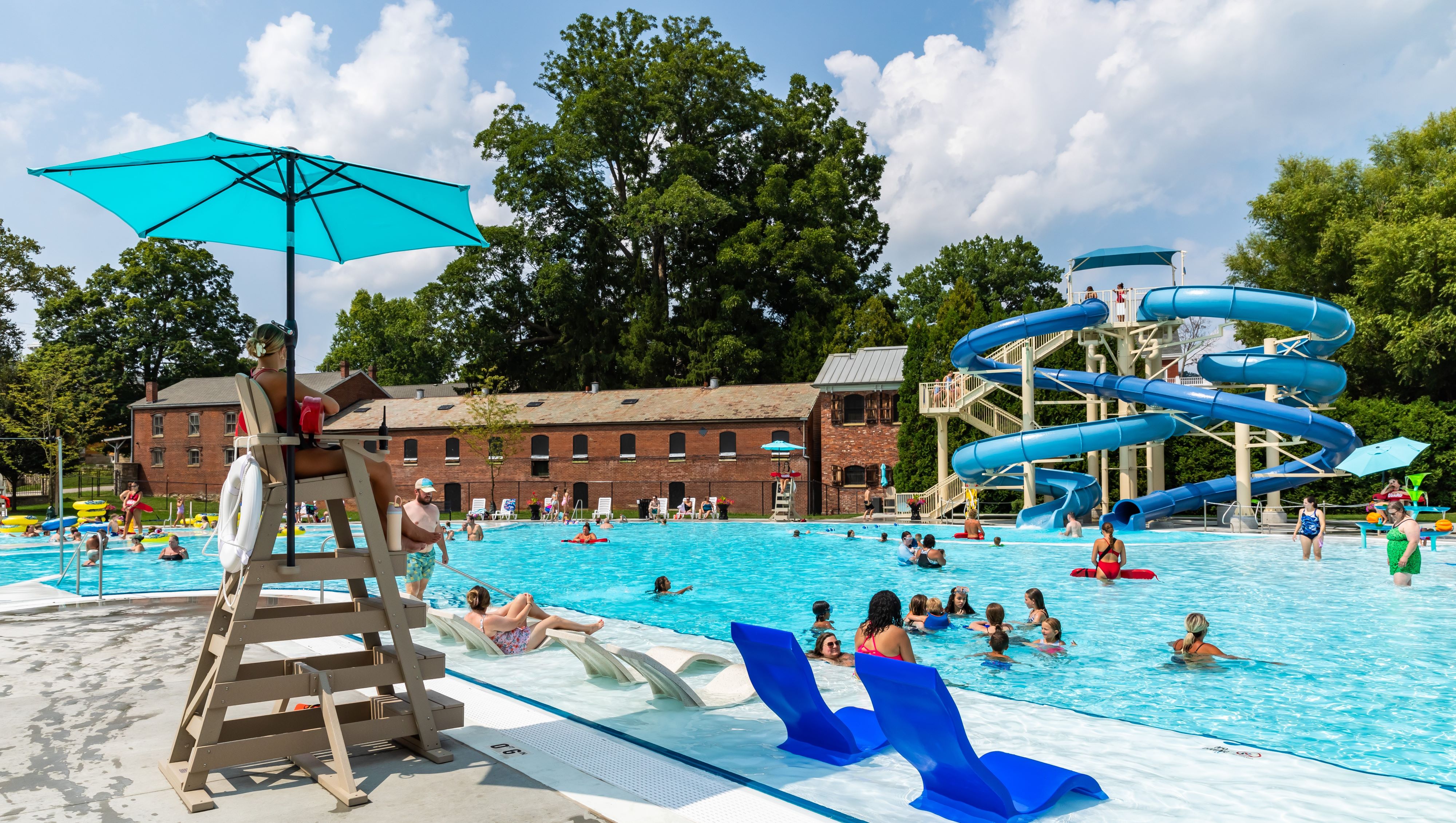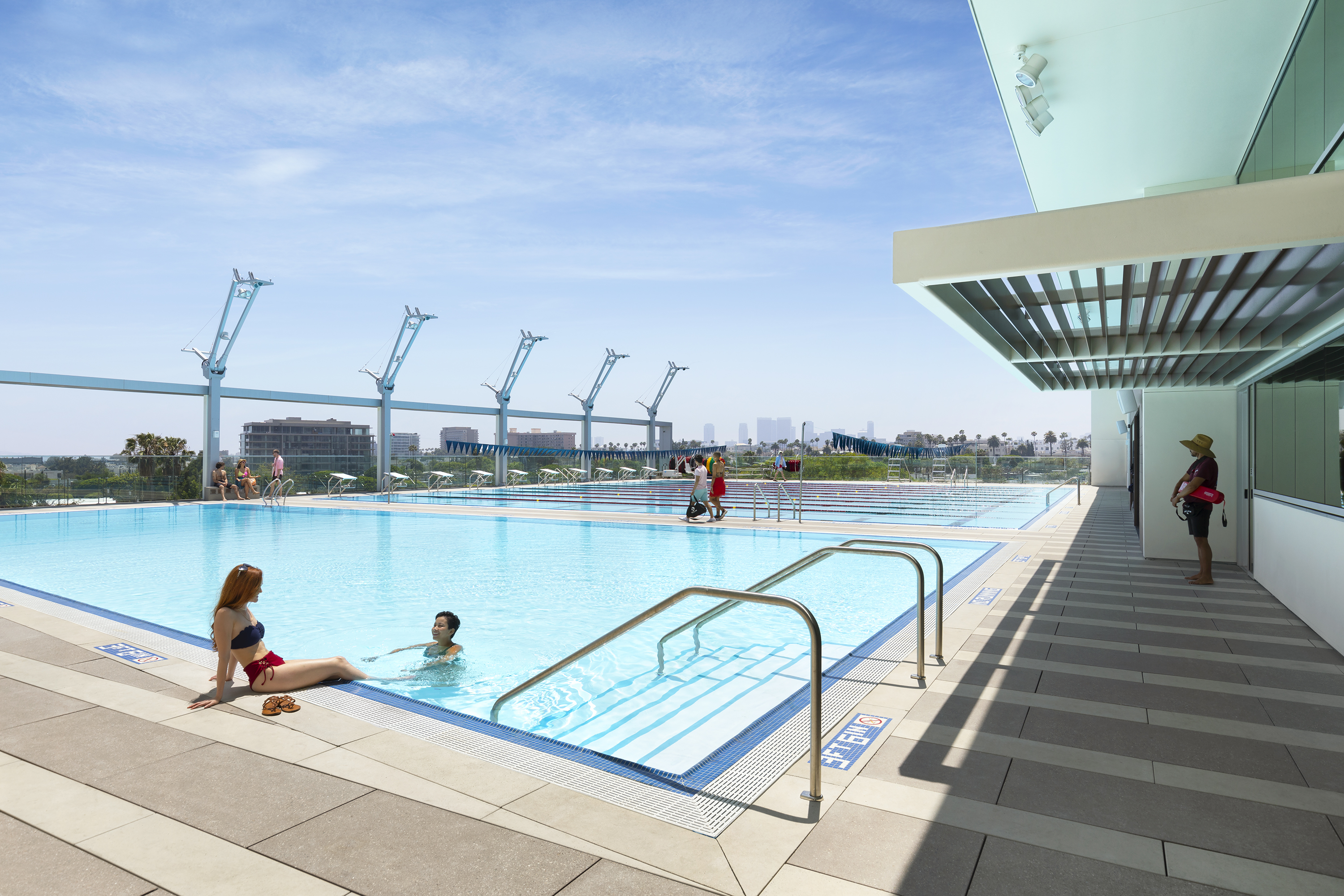Under the right circumstances, restrictions can actually inspire creativity, not thwart it.
Such was the case with this modern beauty, which was featured in last year’s edition of Pebble Technology’s book, The World’s Greatest Pools.
The waterscape would sit behind a home designed in a local style called Dallas modern. “It has an Austin ranch-like look, but is also very clean,” says Nick Hauk, owner and founder of Dallas-based Pure Design, which created the backyard.
In such environments, designers often turn to vanishing edges for their sleek, clean appeal. However, a regular vanishing edge wouldn’t work, because the yard sloped up toward the back. The elevation change would break the visual line from the weir to the horizon. Instead, he oriented the edge to spill toward the house.
“The goal was to make it look like the water was rushing toward the living room,” Hauk says.
He raised the pool 18 inches and placed an acrylic panel across the entire width of the wall closest to the home. The panel, supplied by Hauk’s other business, Dallas-based Elemental Acrylic, provides a view inside the pool, creating a dramatic effect at night when the lit interior glows.
“It just looks like an ice cube that’s on fire when you’re sitting in your living room,” Hauk says.
At one end of the pool sits a raised, perimeter-overflow spa blanketed with a gold and green glass tile. Across from it, an elevated wall veneered in leather-finished limestone provides built-in seating. The pool interior is finished in PebbleTec’s blue granite.
THE FIERY DETAILS
For this effect, Hauk wanted a fire feature running along the entire back of the pool. But the flames couldn’t rise too high above the water.
He set the structure and fire source at pool level, and kept the flames to 6 inches in height. This would leave a low profile for the poolscape and avoid overpowering the acrylic.
“The flames play a trick on your mind,” Hauk says. “I wanted that flame to dance on top of the acrylic edge. When it’s off, you can’t tell there’s a fire pit there, but when it’s on, the flames magically appear from the back.”
Hauk built the fire pit into the top of the pool’s back wall, which was shot approximately 20 inches thick with a double mat of rebar to accommodate the feature.
He linked three 10-foot-long fire burners together to cover the expanse. This caused one complication: How do you supply the fire feature with enough oxygen to feed all 30 feet, especially if the burner sits insider the wall?
Hauk and his team vented the fire pit with six 4-inch PVC pipes, which run from the pool wall, underneath the landscape bed behind it, and finally terminate in the alley. “It’s drawing oxygen behind the landscape and fence,” he says. “And the client doesn’t see any pipes.”
Gas needed to flow uniformly through the line so the feature would fire up consistently from end to end. “When we first turned it on, the first 10 to 15 feet were really good, but not the last 10 to 15 feet,” Hauk says.
In addition to the vent pipes, Hauk and his team mitigated this issue by adding a high-pressure gas meter on the house, satisfying the 220,000-Btu requirement.
ORGANICALLY MODERN
To meld with the modern look and safeguard the 41/2-foot vanishing-edge catch basin, Hauk capped it with fiberglass grating, then placed black Mexican river rock on top.
“I didn’t want plants there, but I didn’t want to run deck up to it,” Hauk explains. “The Mexican river rock provided an organic touch to something that was very modern.”
The pebble acts as something of a filtering agent, as larger debris such as leaves will land on top of it, to be easily blown off or otherwise removed. However, the catch basin does require periodic cleaning, which means removing the pebbles and grate to access it.



